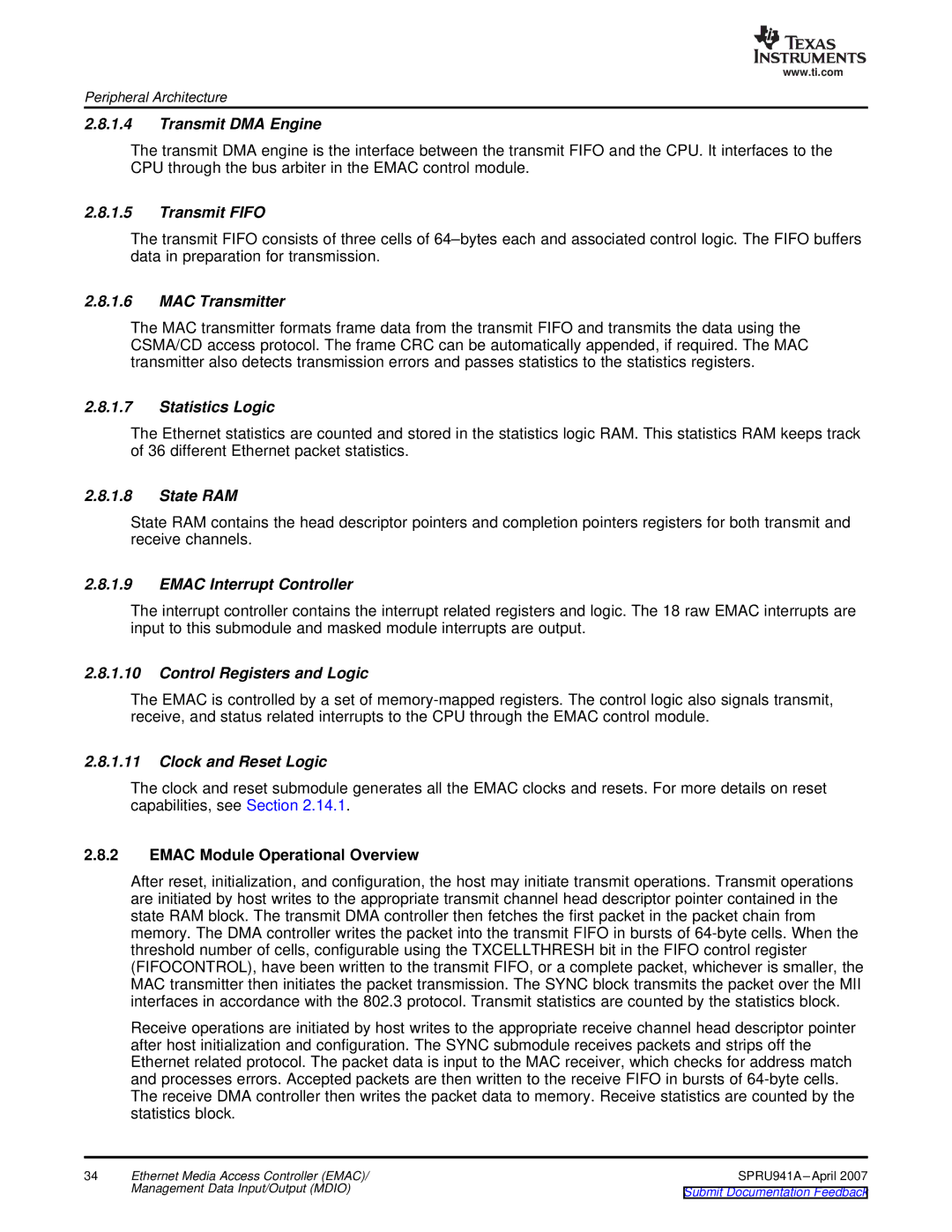
www.ti.com
Peripheral Architecture
2.8.1.4Transmit DMA Engine
The transmit DMA engine is the interface between the transmit FIFO and the CPU. It interfaces to the CPU through the bus arbiter in the EMAC control module.
2.8.1.5Transmit FIFO
The transmit FIFO consists of three cells of
2.8.1.6MAC Transmitter
The MAC transmitter formats frame data from the transmit FIFO and transmits the data using the CSMA/CD access protocol. The frame CRC can be automatically appended, if required. The MAC transmitter also detects transmission errors and passes statistics to the statistics registers.
2.8.1.7Statistics Logic
The Ethernet statistics are counted and stored in the statistics logic RAM. This statistics RAM keeps track of 36 different Ethernet packet statistics.
2.8.1.8State RAM
State RAM contains the head descriptor pointers and completion pointers registers for both transmit and receive channels.
2.8.1.9EMAC Interrupt Controller
The interrupt controller contains the interrupt related registers and logic. The 18 raw EMAC interrupts are input to this submodule and masked module interrupts are output.
2.8.1.10Control Registers and Logic
The EMAC is controlled by a set of
2.8.1.11Clock and Reset Logic
The clock and reset submodule generates all the EMAC clocks and resets. For more details on reset capabilities, see Section 2.14.1.
2.8.2EMAC Module Operational Overview
After reset, initialization, and configuration, the host may initiate transmit operations. Transmit operations are initiated by host writes to the appropriate transmit channel head descriptor pointer contained in the state RAM block. The transmit DMA controller then fetches the first packet in the packet chain from memory. The DMA controller writes the packet into the transmit FIFO in bursts of
Receive operations are initiated by host writes to the appropriate receive channel head descriptor pointer after host initialization and configuration. The SYNC submodule receives packets and strips off the Ethernet related protocol. The packet data is input to the MAC receiver, which checks for address match and processes errors. Accepted packets are then written to the receive FIFO in bursts of
34 Ethernet Media Access Controller (EMAC)/SPRU941A
Management Data Input/Output (MDIO) | Submit Documentation Feedback |
|
